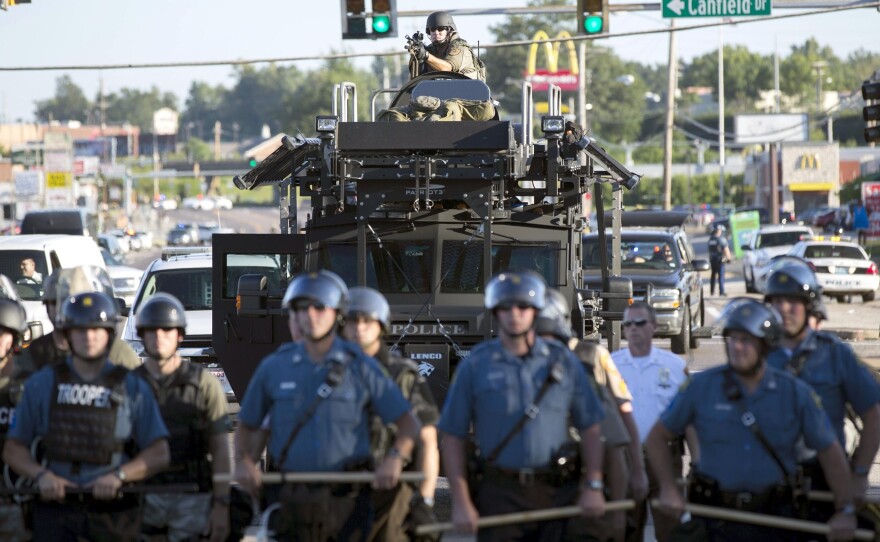Demonstrators protesting the police killing of an unarmed African-American teenager in Ferguson, Missouri were met with a police force equipped to go to war - literally. That's because in recent years, as the wars in Iraq and Afghanistan have drawn down, the amount of surplus military gear flowing to local police departments has soared.
As the New York Times explains, the program to transfer the Pentagon's surplus military equipment to civilian police departments was created by Congress in the early 1990s, as a means of combating drug gang violence. And, since 2006:
[P]olice departments have received tens of thousands of machine guns; nearly 200,000 ammunition magazines; thousands of pieces of camouflage and night-vision equipment; and hundreds of silencers, armored cars and aircraft.
Yet, according to an investigation by The Associated Press in 2013:
[A] large share of the $4.2 billion in surplus military gear distributed by the program since 1990 went to police and sheriff's departments in rural areas with few officers and little crime.
And some critics say the Defense Department’s multi-billion dollar 1033 "warfighter to crimefighter" program backfired in a big way in Ferguson. Former Seattle police chief Norm Stamper, who earned a PhD in the study of human behavior, tells NBC News the use of riot shields by Ferguson police sent the wrong message to demonstrators:
"It makes a huge difference. We are social creatures, we are human beings. We need to see people's eyes and we need to see people's expressions...
"When it's all hidden behind a military presence — like a Kevlar helmet — people aren't going to see the face of that officer. Citizens, in effect, depersonalize their police officers for very understandable reasons."
"We intended this equipment to keep police officers and their communities safe from heavily armed drug gangs and terrorist incidents. Before the defense authorization bill comes to the Senate floor, we will review this program to determine if equipment provided by the Defense Department is being used as intended."
In the wake of the unrest in Ferguson, NBC Nightly News put together this report on the militarization of America's police departments:







